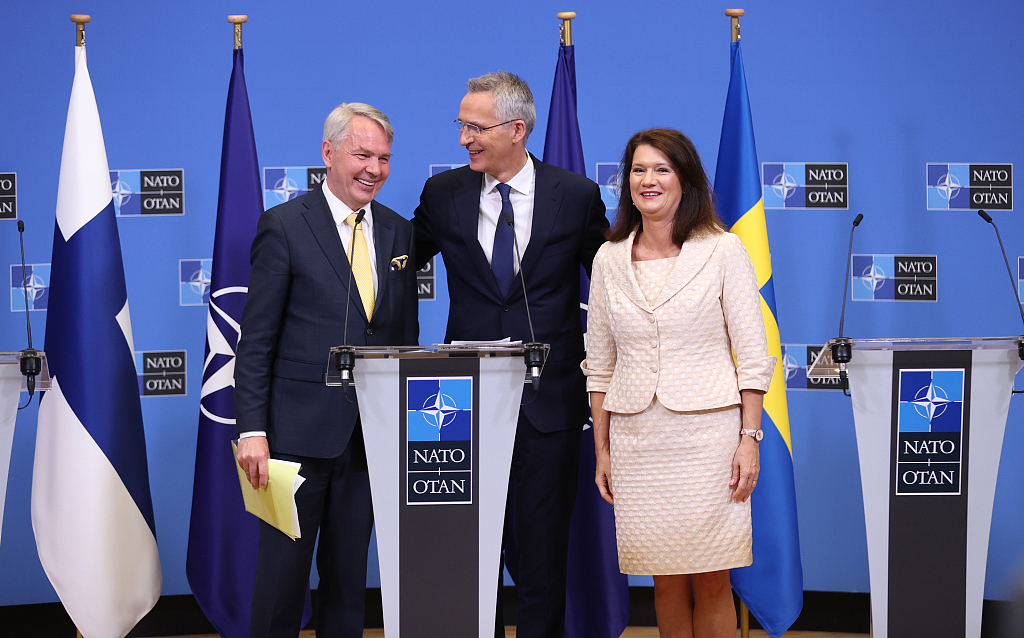
On July 5, representatives from NATO's 30 member states signed accession protocols for Finland and Sweden, marking the sixth round of NATO's expansion. Some people believe that Finland and Sweden's accession to NATO is their autonomous choice in the face of Russian military pressure.
On land, Finland shares a long border of over 1,300 km with Russia, which is difficult to manage if a war ever breaks out. At sea, Finland, Sweden and Russia all are Baltic states as bounded by the Baltic Sea, where the Russian Baltic Fleet has been deployed. Finland and Sweden face Russia with the Baltic Sea in between, and the strong smell of gunpowder in the Baltic Sea, coupled with the historical grievances among the three countries, and the outbreak of the Russia-Ukraine conflict, has made Finland and Sweden change their long-term neutrality policy and finally fallen into the arms of NATO.
The primary reason for their accession to NATO lies in the principle of collective defense at the very heart of the military bloc’s founding treaty since its very beginning, that is, an attack against one Ally is considered as an attack against all Allies. Iceland, unique among NATO Allies that does not have a standing army, can get a "free ride" to enjoy the security protection by the alliance, while Finland and Sweden, which have "positive assets" in military domain, are quite powerful and can bring multiple benefits to both NATO and the US.
The addition of Finland and Sweden serves to extend the power distribution of NATO's northern flank. Although Finland and Sweden are wealthy countries with small-scale militaries, their military equipment cannot to be underestimated. The two countries are characterized by strong defense industrial capability. To be specific, Finland, as an integral part of the military-industrial complex composed of the US and over 10 other countries, has the ability to build an even stronger air defense pattern in Europe together with its NATO Allies. Sweden’s Gripen fighter series has performed well, and Sweden has professional experience in the Arctic and submarine fields, and can also help expand the strength of other US-led multilateral alliances.
Not only can the two countries bring modern, highly specialized military forces into NATO, but they can also achieve a win-win situation with the US. On the one hand, the US nuclear umbrella is highly attractive to the two countries. Even if the two countries get into a conflict with Russia, there is no need to worry about the threat of Russian nuclear weapons. At the same time, the frequent commitment to European security as made by the US has also made the two countries feel quite assured. On the other hand, while committed to providing security for Europe, the US also takes the principle of collective defense as its concept to stabilize Europe with the European security strategic partners, and ensure the US worry-free in entering other parts of the world.
As of now, the Finnish and Swedish troops have regularly participated in NATO exercises, featuring high interoperability to jointly deal with Russia. And also the US is free to deal with opponents even tougher. The accession of Sweden and Finland to NATO may indeed allow the US to be free to deal with other opponents; however, it is still a big question as to whether Europe can gain stability and whether Finland and Sweden can benefit from the move.
Editor's Note: This article is originally published on thepaper.cn, and is translated from Chinese into English and edited by the China Military Online. The information, ideas or opinions appearing in this article do not necessarily reflect the views of eng.chinamil.com.cn.













